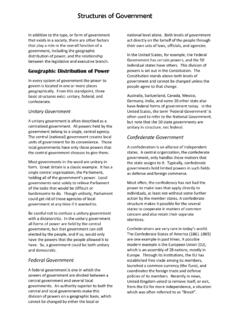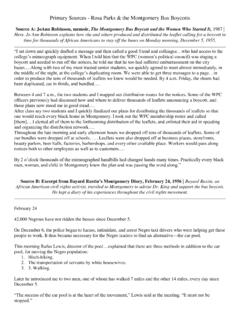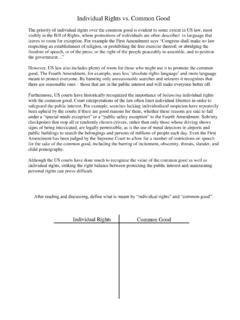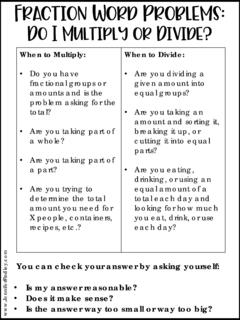Transcription of The Depression Devastates People’s Lives
1 The Depression Devastates People s Lives Statistics such as the unemployment rate tell only part of the story of the Great Depression . More important was the impact that it had on people s Lives : the Depression brought hardship, homelessness, and hunger to millions. THE Depression IN THE CITIES In cities across the country, people lost their jobs, were evicted from their homes and ended up in the streets. Some slept in parks or sewer pipes, wrapping themselves in newspapers to fend off the cold. Others built makeshift shacks out of scrap materials. Before long, numerous shantytowns little towns consisting of shacks sprang up. An observer recalled one such settlement in Oklahoma City: Here were all these people living in old, rusted-out car bodies.. There were people living in shacks made of orange crates. One family with a whole lot of kids were living in a piano box.. People were living in whatever they could junk together. Every day the poor dug through garbage cans or begged.
2 Soup kitchens offering free or low-cost food and bread lines, or lines of people waiting to receive food provided by charitable organizations or public agencies, became a common sight. One man described a bread line in New York City. AFRICAN AMERICAN AND LATINOS Conditions for African Americans and Latinos were especially difficult. Their unemployment rates were higher, and they were the lowest paid. They also dealt with increasing racial violence from unemployed whites competing for the same jobs. Twenty-four African Americans died by lynching in 1933. Latinos mainly Mexicans and Mexican Americans living in the Southwest were also targets. Whites demanded that Latinos be deported, or expelled from the country, even though many had been born in America. By the late 1930s, hundreds of thousands of people of Mexican descent relocated to Mexico. Some left voluntarily; others were deported by the federal government. THE Depression IN RURAL AREAS Life in rural areas was hard, but it did have one advantage over city life: most farmers could grow food for their families.
3 With falling prices and rising debt, though, thousands of farmers lost their land. Between 1929 and 1932, about 400,000 farms were lost through foreclosure the process by which a mortgage holder takes back property if an occupant has not made payments. Many farmers turned to tenant farming and barely scraped out a living. In the face of the suffering caused by the Great Depression , the family stood as a source of strength for most Americans. Although some people feared that hard times would undermine moral values, those fears were largely unfounded. In gen-eral, Americans believed in traditional values and emphasized the importance of family unity. At a time when money was tight, many families entertained themselves by staying at home and playing board games, such as Monopoly (invented in 1933), and listening to the radio. Nevertheless, the economic difficulties of the Great Depression put severe pressure on family life. Making ends meet was a daily struggle, and, in some cases, families broke apart under the strain MEN IN THE STREETS Many men had difficulty coping with unemployment because they were accustomed to working and supporting their families.
4 Every day, they would set out to walk the streets in search of jobs. As Frederick Lewis Allen noted in Since Yesterday, Men who have been sturdy and self-respecting workers can take unemployment without flinching for a few weeks, a few months, even if they have to see their families suffer; but it is different after a year .. two years .. three years. Some men became so discouraged that they simply stopped trying. Some even abandoned their families. During the Great Depression , as many as 300,000 transients or hoboes as they were called wandered the country, hitching rides on railroad boxcars and sleeping under bridges. These hoboes of the 1930s, mainly men, would occasionally turn up at homeless shelters in big cities. The novelist Thomas Wolfe described a group of these men in New York City. During the early years of the Great Depression , there was no federal system of direct relief cash payments or food provided by the government to the poor. Some cities and charity services did offer relief to those who needed it, but the benefits were meager.
5 In New York City, for example, the weekly payment was just $ per family. This was the most generous relief offered by any city, but it was still well below the amount needed to feed a family. WOMEN STRUGGLE TO SURVIVE Women worked hard to help their families survive adversity during the Great Depression . Many women canned food and sewed clothes. They also carefully managed household budgets. Jeane Westin, the author of Making Do: How Women Survived the 30s, recalled, Those days you did everything to save a penny.. My next door neighbor and I used to shop together. You could get two pounds of hamburger for a quarter, so we d buy two pounds and split it then one week she d pay the extra penny and the next week I d pay. Many women also worked outside the home, though they usually received less money than men did. As the Depression wore on, however, working women became the targets of enormous resentment. Many people believed that women, especially married women, had no right to work when there were men who were unemployed.
6 In the early 1930s, some cities refused to hire married women as schoolteachers. Many Americans assumed that women were having an easier time than men during the Great Depression because few were seen begging or standing in bread lines. As a matter of fact, many women were starving to death in cold attics and rooming houses. As one writer pointed out, women were often too ashamed to reveal their hardship. CHILDREN SUFFER HARDSHIPS Children also suffered during the 1930s. Poor diets and a lack of money for health care led to serious health problems. Milk consumption declined across the country, and clinics and hospitals reported a dramatic rise in malnutrition and diet-related diseases, such as rickets. At the same time, child-welfare programs were slashed as cities and states cut their budgets in the face of dwindling resources. Falling tax revenues also caused school boards to shorten the school year and even close schools. By 1933, some 2,600 schools across the nation had shut down, leaving more than 300,000 students out of school.
7 Thousands of children went to work instead; they often labored in sweatshops under horrendous conditions. As one writer pointed out, women were often too ashamed to reveal their hardship. Many teenagers looked for a way out of the suffering. Hundreds of thousands of teenage boys and some girls hopped aboard America s freight trains to zigzag the country in search of work, adventure, and an escape from poverty. These wild boys came from every section of the United States, from every corner of society. They were the sons of poor farmers, and out-of-work miners, and wealthy parents who had lost everything. Hoover tourists, as they were called, were eager to tour America for free. From the age of eleven until seventeen, George Phillips rode the rails, first catching local freights out of his home town of Princeton, Missouri. There is no feeling in the world like sitting in a side-door Pullman and watching the world go by, listening to the clickety-clack of the wheels, hearing that old steam whistle blowing for crossings and towns.
8 While exciting, the road could also be deadly. Many riders were beaten or jailed by bulls armed freight yard patrolmen. Often riders had to sleep standing up in a constant deafening rumble. Some were accidentally locked in ice cars for days on end. Others fell prey to murderous criminals. From 1929 to 1939, 24,647 trespassers were killed and 27,171 injured on railroad property. SOCIAL AND PSYCHOLOGICAL EFFECTS The hardships of the Great Depression had a tremendous social and psychological impact. Some people were so demoralized by hard times that they lost their will to survive. Between 1928 and 1932, the suicide rate rose more than 30 percent. Three times as many people were admitted to state mental hospitals as in normal times. The economic problems forced many Americans to accept compromises and make sacrifices that affected them for the rest of their Lives . Adults stopped going to the doctor or dentist because they couldn t afford it. Young people gave up their dreams of going to college.
9 Others put off getting married, raising large families, or having children at all. For many people, the stigma of poverty and of having to scrimp and save never disappeared completely. For some, achieving financial security became the primary focus in life. As one woman recalled, Ever since I was twelve years old there was one major goal in my life .. one thing .. and that was to never be poor again. During the Great Depression many people showed great kindness to strangers who were down on their luck. People often gave food, clothing, and a place to stay to the needy. Families helped other families and shared resources and strengthened the bonds within their communities. In addition, many people developed habits of saving and thriftiness habits they would need to see themselves through the dark days ahead as the nation and President Hoover struggled with the Great Depression . These habits shaped a whole generation of Americans.














